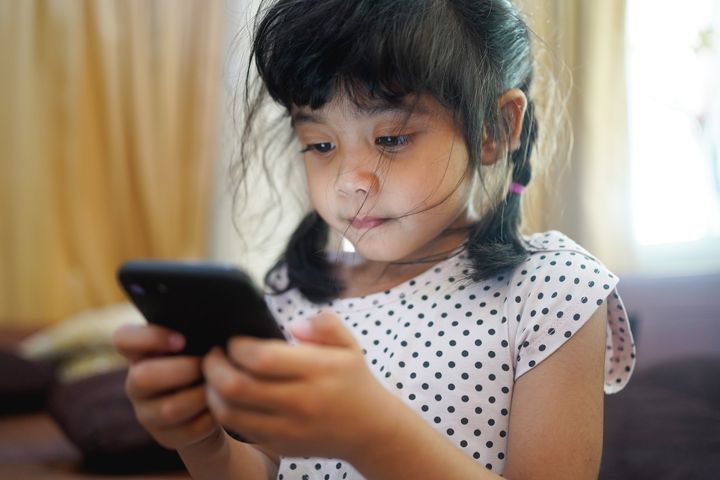
My two sons always got some screen time daily, but my husband and I tried to set relatively clear limits about what they could play and watch, and for how long. Then the COVID-19 pandemic hit, and like so many other parents and caregivers, we leaned into screens hard. Our 6-year-old got an iPad. Our toddler grew accustomed to multihour Blippi marathons while my husband and I worked. My children have become legitimate screen monsters.
Various surveys suggest that my experience isn’t an anomaly and that kids’ screen time during the pandemic has soared. American kids now spend more than four hours a day on screens, and screen time has basically doubled over the past 18 months. One psychologist recently warned The New York Times that America’s kids are headed for a “period of epic withdrawal.”
I haven’t fretted too much about any of this yet, because I do believe my sons’ screen use was a matter of necessity. Screens babysat my kids when we were locked down together in our tiny apartment and didn’t have outside child care. They gave me a much-needed break when my stress levels were so high I felt like I was practically vibrating.
But things feel different now. For one, I am hopeful that — for the first time in more than a year — both of my children will soon actually be in school full-time. I don’t really want the amount of screen time my kids have gotten accustomed to to be what they expect moving forward. I also feel more pressure about how long this has been going on — and with the delta variant circulating and rates increasing again around the country, I’m aware that the pandemic is likely to continue for a while. In other words, the “survival use” of screen time is over — and I don’t want my kids to expect it in the same way every day.
Are you also thinking about dialing back your children’s screen time? Here are some strategies and ideas to have in mind.
Consider The Content And The Costs
Every family develops their own screen time rules, and even groups like the American Academy of Pediatrics and American Academy of Child and Adolescent Psychiatry tend to be pretty vague with their recommendations for kids over the age of 6. They urge parents to “encourage healthy habits” and “limit activities that include screens” — whatever that means.
What experts generally recommend is that you be deliberate about setting those limits, rather than winging it. And when devising your own family boundaries and rules, consider what kids are watching and playing, knowing they can absorb content from TV, movies and video games.
In her new book “The Family Firm: A Data-Driven Guide to Better Decision Making in the Early School Years,” economist and parenting guru Emily Oster recommends that parents also think about what she calls the “opportunity cost” of spending time in front of screens. Basically, there are only so many hours during the day. So if your child is spending time watching TV, they’re not using that time to play or learn or engage in an extracurricular activity of some kind. You might be totally OK with that, and Oster notes that kids really need a break sometimes. But it’s something to consider.
“Help your child transition from screen time to active play time. For instance, if your child is watching a cartoon, turn off the TV and encourage your child to build on the storyline themselves with toys.”
- experts from the Center on Media and Child Health at Boston Children’s Hospital
In my house over the past 18 months, my kids were watching screens so they weren’t interrupting me during a meeting or driving me mad while I tried to get something done. Now that things have opened up more, though, their screen time is definitely replacing potentially more valuable pursuits, like hanging out with friends or reading.
Know that your child probably won’t be thrilled if you change your screen-related rules now that the opportunity costs are potentially more significant.
“As we come out of this, there are definitely going to be some moments where we are going to have make rules that take away privileges, and as our kids age that isn’t as common,” Oster told HuffPost. “They will be angry. And that’s just kind of what it is.”
Emphasize Play
If you’re trying to cut down on screen time, it can really help to emphasize play in order to “balance out the equation,” according to experts with the Center on Media and Child Health at Boston Children’s Hospital.
“Carve out time specifically dedicated to play,” experts at the center say. “Plan activities that incorporate different types of play, including board games, balls, blocks and role play.”

You may not have had the time or energy for playing with your child — or helping them get started with play — when we were really thick in the lockdown period of the pandemic and truly in survival mode, but perhaps you have some more energy for that now. (Personally, there was a point about six months into the pandemic where I could not handle more imaginary play with my kids and placed a moratorium on hide-and-seek; now I’m starting to embrace it again, and have also really learned that I’m in my sweet spot when it comes to reading and drawing together.)
The good news is, kids seem to be getting more play in their days pretty organically right now. There is evidence that kids’ boredom is down at this point in the pandemic, while their overall feelings of happiness and enjoyment are steadily increasing, too.
Really Help Them With Transitions
As Oster warned, kids are going to react to being told they cannot be on screens as much as they may have been over the past year-plus. You should expect that and be prepared to hold your boundary — but it’s also helpful to really work with your child through transitions from screen time to something else.
“Help your child transition from screen time to active play time. For instance, if your child is watching a cartoon, turn off the TV and encourage your child to build on the storyline themselves with toys,” the experts with CMCH say.
Previews and countdowns are other valuable tools, the Child Mind Institute’s website points out. Children can learn to switch gears from screen time to something else without too much anger or whining, but they might need you to give them a specific time frame (like: “In 10 minutes, we’re going to turn the TV off and then do XYZ”).
And being consistent about your new routines is key.
“Having a predictable structure in place can be reassuring and helpful even for older kids (and adults!),” the Child Mind Institute says.